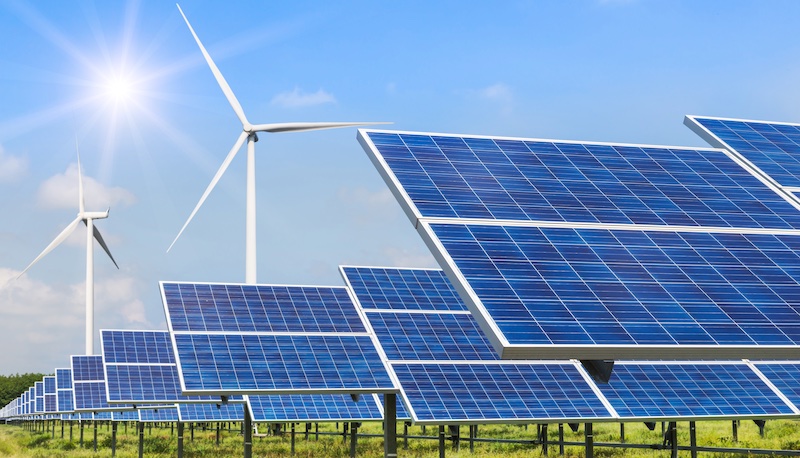
The expansion of photovoltaic systems has currently even surpassed the federal government’s targets. But the many new solar systems can put a strain on the electricity grid.
The federal government has set a target of 88 gigawatts for photovoltaic systems for 2024. Almost 91 gigawatts have already been installed, as the German Institute for Economic Research (DIW) has determined.
This means that the expansion of PV systems is already well above the target. But this could also put a strain on the German electricity grid, as the new solar systems have to be integrated efficiently into the system.
This is the situation with the expansion of PV systems in Germany
For its traffic light monitor Energy Transition, the German Institute for Economic Research took a close look at the current status of solar systems and compared it with the federal government’s targets.
The study authors Wolf-Peter Schill and Alexander Roth see potential here, especially in solar systems on open spaces. Because the expansion here is slower than that of building systems.
“While smaller PV systems on buildings are in great demand, especially because of the advantages of self-consumption, there is still a lot of potential for ground-mounted systems in Germany,” explains Schill.
Schmidt suggests that the federal government once again increase the tender quantities for open-space systems. This could also reduce expansion costs, as PV systems on open spaces are cheaper than roof systems.
Balcony power plants only make up a small part
However, the increasing number of balcony power plants is hardly involved in meeting the targets for PV systems. Because these usually have very small modules and therefore only make up 0.5 percent of the total PV output in Germany.
This means that the approximately 600,000 balcony power plants in Germany cannot compete with systems on large areas. The latter have increased particularly sharply in Bavaria. Around a quarter of the installed capacity in Germany is generated here.
When will solar systems become a burden on power grids?
According to the DIW, so that solar systems do not become a burden on the German electricity grid, they must be efficiently integrated into the German electricity system. “One challenge is to efficiently integrate the volumes of solar electricity, which fluctuate greatly over the course of the day and year, into the electricity market,” explains Alexander Roth.
It is currently becoming apparent that the existing storage facilities are not sufficient or are being operated correctly. The DIW was able to identify pronounced low price phases during the hours of peak solar power feed-in.
This suggests that flexibility in the electricity sector has grown more slowly than the performance of PV systems. “In order for storage systems to be operated in a way that benefits the system in the area of self-consumption, better price incentives must be set,” explains Alexander Roth.
Also interesting:
- Perovskite coating: Researchers generate solar power without a solar system
- Study: Solar systems with energy storage are cheaper than coal and gas power plants
- Molecular treatment: Researcher improves perovskite solar cells
- Researchers are increasing the efficiency of tandem solar cells – with a new coating
The article Solar systems put a strain on the power grid – that’s why by Maria Gramsch appeared first on BASIC thinking. Follow us too Facebook, Twitter and Instagram.
Solar systems can indeed put a strain on the power grid, especially in situations where there is a high concentration of solar installations in a particular area. This is because solar power generation is intermittent and dependent on factors such as weather and time of day. When there is an excess of solar power being generated, it can overwhelm the grid and create issues such as voltage fluctuations and instability.
Additionally, the power grid was not originally designed to handle two-way energy flows, which can occur with solar systems that are connected to the grid. This can lead to challenges in managing the flow of electricity and ensuring grid stability.
To address these issues, grid operators are implementing strategies such as advanced grid management systems, energy storage solutions, and smart grid technologies to better integrate solar power into the grid. These efforts are crucial in ensuring that solar systems can be effectively integrated into the power grid without causing strain or disruptions.
Credits